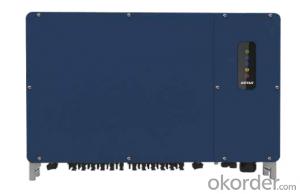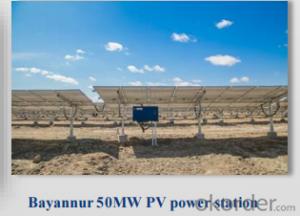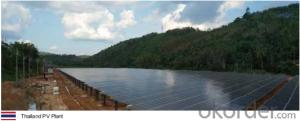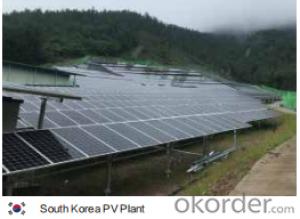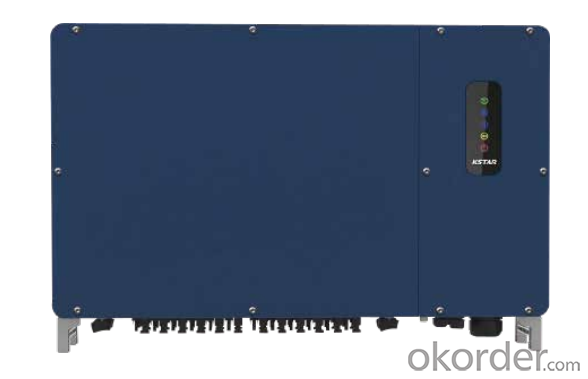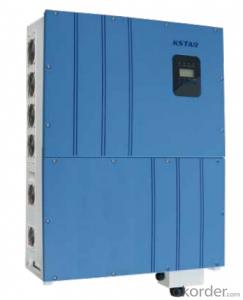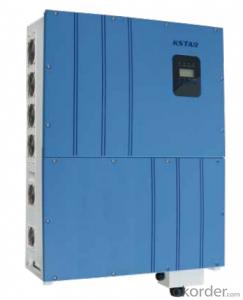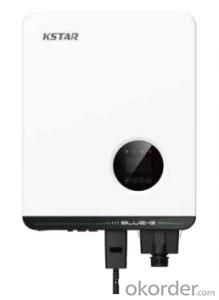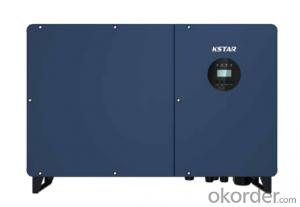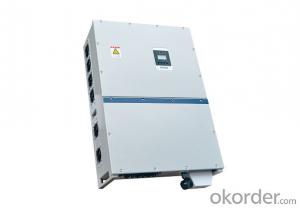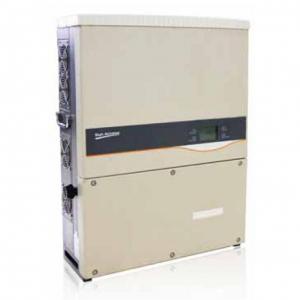36 Volt Solar Inverter String Grid-Tied PV Inverter KSG-200UH/ KSG-250UH
- Loading Port:
- China main port
- Payment Terms:
- TT OR LC
- Min Order Qty:
- 50 pc
- Supply Capability:
- 15000 pc/month
OKorder Service Pledge
OKorder Financial Service
You Might Also Like
Specification
Product Description:
★1500Vdc, 800Vac 12 MPP Tracker, 24 PV Strings Input
★Smart I/V Curve Function DC and AC Type II SPD
★Optional AFCI Function Optional Night SVG Function
★PLC communication Max. DC/AC ratio >1.5
Technical Specifications:
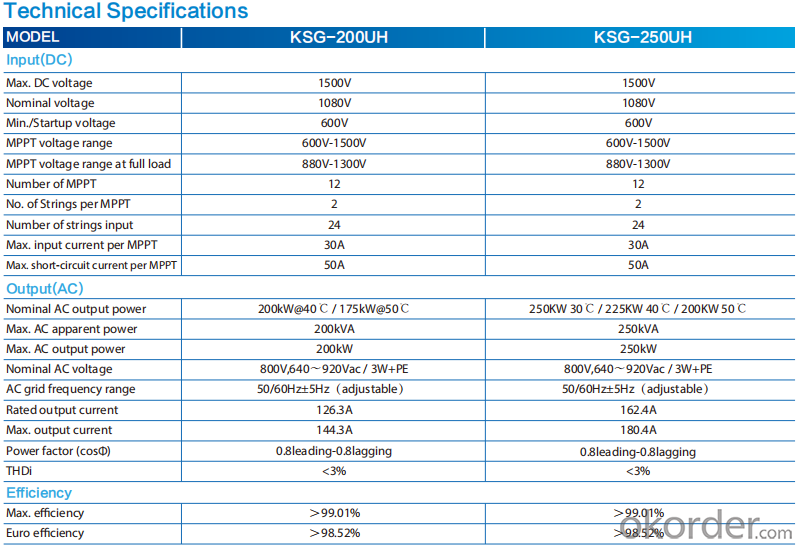
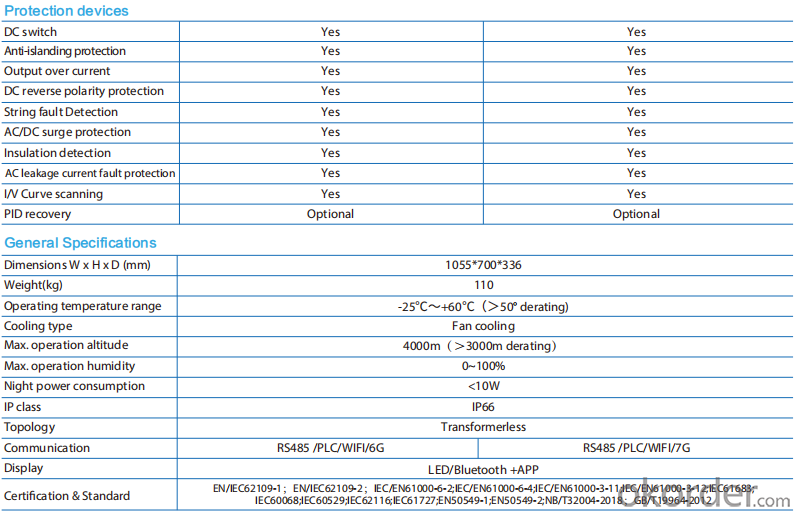
FAQ:
Q:How the output voltage of the PV inverter and the grid-connected voltage are determined
Inverter is the DC power (battery, battery) into alternating current (usually 220V, 50Hz sine wave). It consists of inverter bridge, control logic and filter circuit. Widely used in air conditioning, home theater, electric wheel, power tools, sewing machines, DVD, VCD, computer, TV, washing machine, range hood, refrigerator, video recorders, massage, fan, lighting and so on. In foreign countries
Q:Installation and maintenance of photovoltaic grid - connected inverter
only when the local power sector permission by the professional and technical personnel to complete all the electrical connection before the inverter can be connected.
Q:What is the difference between a PV grid-connected inverter and an off-grid inverter?
Off-grid inverter is equivalent to their own to establish an independent small power grid, mainly to control their own voltage, is a voltage source.
Q:After the PV inverter, how to achieve the same period before the network?
Solar panel simulator: with MPPT function, simulated morning, noon, afternoon, evening, rainy weather, solar panels produced under different conditions in different voltages.
Q:Is the PV inverter a current source or a voltage source?
According to the waveform modulation method can be divided into square wave inverter, stepped wave inverter, sine wave inverter and modular three-phase inverter.
Q:Photovoltaic grid-connected inverter without DC emc how will happen
Solar photovoltaic power generation technology is the use of solar cells, the photovoltaic effect of semiconductor materials, solar radiation can be directly converted into a new type of power generation system, solar energy is a radiant energy, solar power means --- to direct conversion of sunlight Into electricity,
Q:What is the difference between low voltage grid connection and medium voltage grid connection?
For photovoltaic power plants when the power system accidents or disturbances caused by photovoltaic power plant grid voltage drop, in a certain voltage drop range and time interval, the photovoltaic power plant can ensure that non-off-line continuous operation.
Q:Is the grid side of the grid and the inverter?
The grid load side of the grid is the grid. The inverter is an important part of the PV grid-connected system and can not be regarded as an external load. Photovoltaic power generation system is included in both grid and off-grid.
Q:PV grid-connected inverter and independent inverter in the control of what is the difference
The independent inverter in the output voltage phase amplitude of the frequency control is initially set good. Independent inverter, you should refer to off-grid inverter, do not need to consider the grid situation.
Product Images:
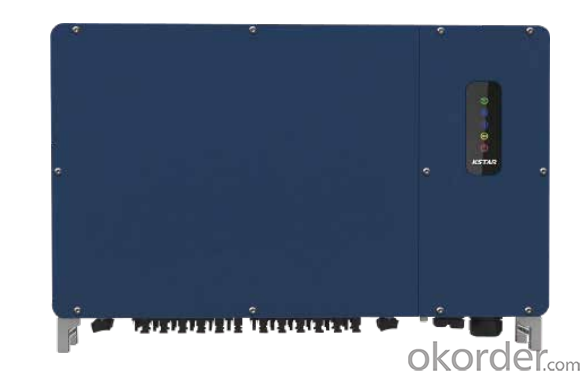
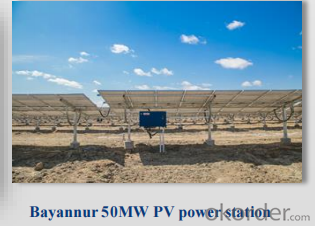
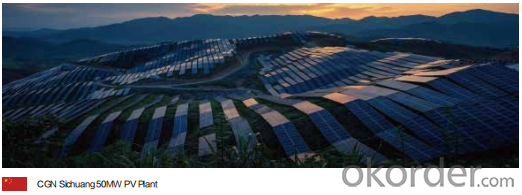

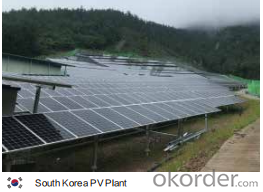
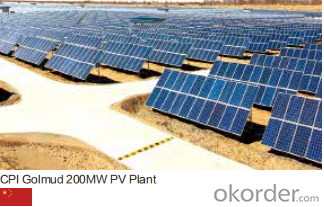
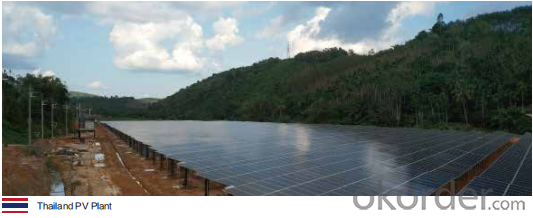
Production Process Photos:
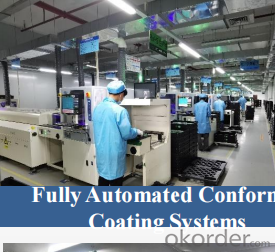
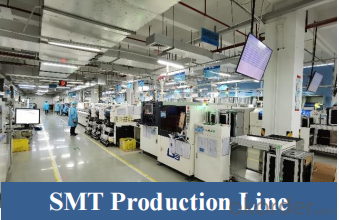
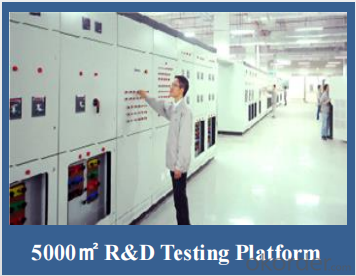
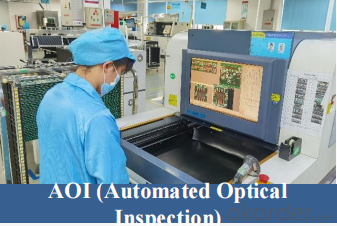
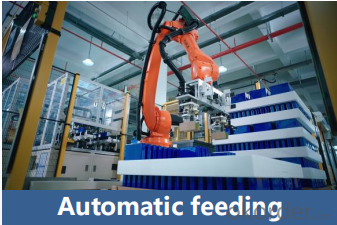
- Q: What is the role of a maximum power point tracker in a solar inverter?
- The role of a maximum power point tracker (MPPT) in a solar inverter is to optimize the energy harvesting efficiency of the solar panels. It continuously monitors the output voltage and current of the panels and adjusts the operating point to ensure maximum power extraction from the panels. By tracking the maximum power point, the MPPT allows the solar inverter to generate the highest possible energy output from the available sunlight, thus maximizing the overall system performance.
- Q: How does a solar inverter handle voltage fluctuations from the battery bank?
- A solar inverter handles voltage fluctuations from the battery bank by utilizing its built-in control mechanisms and electronics. These components monitor the voltage output of the battery bank and regulate it to ensure stable and consistent voltage levels. This helps prevent any sudden or drastic fluctuations that could potentially damage electrical equipment or disrupt the functioning of the system.
- Q: Can a solar inverter be used with different types of grounding systems?
- Yes, a solar inverter can be used with different types of grounding systems. Most solar inverters are designed to be compatible with various grounding configurations, including but not limited to grounded, ungrounded, and impedance grounded systems. However, it is important to consult the manufacturer's specifications and guidelines to ensure proper installation and compatibility with the specific grounding system in use.
- Q: What are the common troubleshooting steps for a malfunctioning solar inverter?
- The common troubleshooting steps for a malfunctioning solar inverter may include checking the power supply, inspecting the wiring connections, resetting the inverter, performing a firmware update, checking for error codes or error messages, and consulting the manufacturer's manual or contacting technical support for further assistance.
- Q: What is the role of a solar inverter in a solar panel system?
- The role of a solar inverter in a solar panel system is to convert the direct current (DC) electricity generated by the solar panels into alternating current (AC) electricity that can be used to power household appliances and be fed back into the electrical grid. It also ensures that the electricity produced by the solar panels is of the correct voltage and frequency for safe and efficient use in homes and businesses.
- Q: Can a solar inverter be used with different types of power conditioning units?
- No, a solar inverter is specifically designed to work with solar power conditioning units. It may not be compatible with other types of power conditioning units such as wind or hydro power systems.
- Q: Can a solar inverter be used with a solar-powered refrigerator?
- Yes, a solar inverter can be used with a solar-powered refrigerator. The solar inverter is responsible for converting the direct current (DC) generated by the solar panels into alternating current (AC) that can be used to power appliances like a refrigerator.
- Q: What is the lifespan of a solar inverter?
- The lifespan of a solar inverter typically ranges from 10 to 15 years, depending on various factors such as the quality of the inverter, proper maintenance, and operating conditions.
- Q: How does a solar inverter affect the overall system reliability?
- A solar inverter plays a crucial role in the overall system reliability of a solar power system. It converts the direct current (DC) generated by solar panels into alternating current (AC) that can be used to power homes or be fed back into the grid. By ensuring efficient and reliable conversion, a solar inverter helps optimize the system's performance and stability. It also incorporates various protection features like over-voltage and over-current protection to safeguard the system from potential damage. Therefore, a high-quality and well-maintained solar inverter positively impacts the overall reliability of the solar power system.
- Q: What is the role of isolation in a solar inverter?
- The role of isolation in a solar inverter is to provide electrical safety and protect sensitive electronic components. It helps to separate the direct current (DC) input from the alternating current (AC) output, ensuring that any faults or fluctuations in one do not affect the other. Isolation also prevents any potential ground faults, reducing the risk of electric shock and improving system reliability.
Send your message to us
36 Volt Solar Inverter String Grid-Tied PV Inverter KSG-200UH/ KSG-250UH
- Loading Port:
- China main port
- Payment Terms:
- TT OR LC
- Min Order Qty:
- 50 pc
- Supply Capability:
- 15000 pc/month
OKorder Service Pledge
OKorder Financial Service
Similar products
Hot products
Hot Searches
Related keywords
